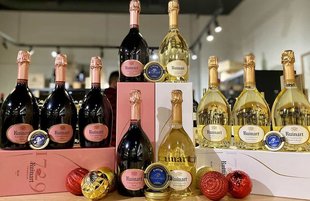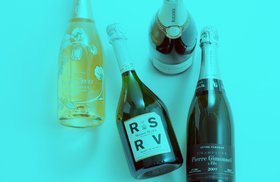Champagne Ruinart: Winemaking, Best Wines, Prices (2025)
Want to know what’s special about Champagne Ruinart before you buy it?
Maison Ruinart (pronounced “rwee-nahr”) is renowned for exclusively producing fabulous Chardonnay-based Champagne since 1729. This surprisingly low profile producer is, in fact, the oldest Champagne house in the world.
Its Blanc de Blancs have been a household name among European Champagne drinkers for centuries.
But, what other wines does Maison Ruinart make? How is Champagne Ruinart made?
And what makes the Ruinart style stand out?
Let’s explore Ruinart’s history, the wine styles, taste profile, and food pairing ideas. We’ll also look into investing in Champagne Ruinart and the most elegant bottles to buy in 2024.
Further reading
- Discover the Smartest Ways To Invest In Wine in this super-insightful guide.
- Looking for other Champagne brands? Explore the best Moet and Armand de Brignac champagnes you can add to your wine collection.
The House of Ruinart

Maison Ruinart was founded in 1729 by cloth merchant Nicolas Ruinart in the city of Reims in the Champagne region of France.
Nicolas was inspired to do so by his uncle, Dom Thierry Ruinart, a monk who learned of “wine with bubbles” when he lived near Paris and was said to have been friends with the famous monk Dom Perignon.
Initially, Nicolas gave the Champagne he made to wealthy clients, who purchased his cloth and fabrics. But by 1735, demand increased so much that they abandoned the cloth trade to focus on making Champagne.
In the mid-18th century, Maison Ruinart acquired the Crayères, a series of Gallo-Roman chalk cellars dug beneath the city of Reims. The Crayères represents the very soul of Ruinart, where its precious bottles are stored.
Fun fact: The Crayères extends 38m below the ground and is 8km long. It is a UNESCO World Heritage site.
Ruinart is not only the oldest established Champagne house, but it was also the first to create a rosé Champagne — shipping its first rosé in 1764 across Europe.
In 1963, Maison Ruinart was acquired by Moët & Chandon, which later became part of the LVMH group and their impressive portfolio of Champagne houses.
Today, Maison Ruinart has become synonymous with class, and its production of only 1.7 million bottles per annum is way smaller than its contemporaries.
Though no members of the Ruinart family are still involved in the business, Dom Ruinart’s legacy continues to shine alongside the likes of Dom Perignon, Moët & Chandon, and Veuve Clicquot Champagnes.
Also read: Find out the most fascinating Red Wines and cellar-worthy White Wines to invest in 2024.
Ruinart Viticulture

Maison Ruinart is well known for its focus on the Chardonnay grape. At the heart of their production values is a sincere commitment to a sustainable future.
All Ruinart cuvées are based on the Chardonnay grape, which is why this house is sometimes called the “Chardonnay House.”
This complex grape variety is harvested primarily from the Côte des Blancs and Montagne de Reims terroirs. The high chalk content in the soils offers ideal conditions for vine growth.
Maison Ruinart has also been a pioneer of sustainable viticulture since the early 2000s.
Also read: Uncover sensational sparkling Moscato d’Asti and other Moscato wines in this illuminating guide.
Now let’s look at the steps that go into the making of Ruinart Champagne.
How is Champagne Ruinart Made?
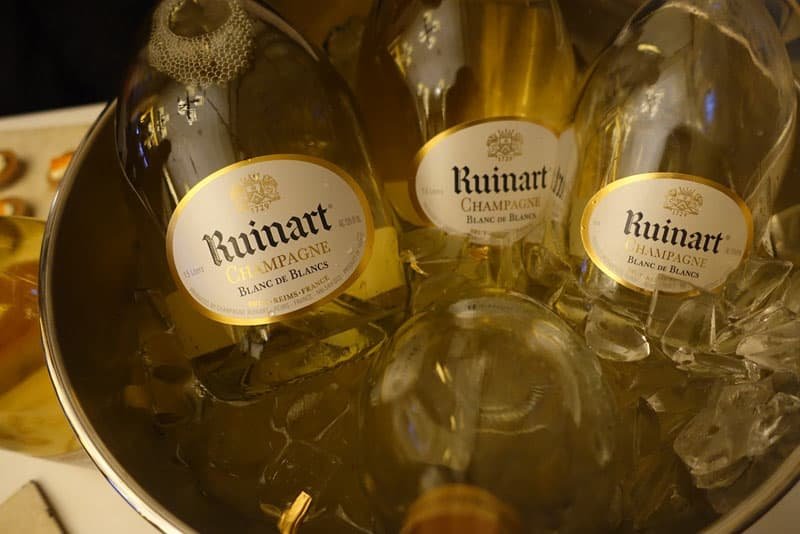
These are the key steps involved:
- Once harvested, the fruit goes through the usual process of vinification and fermentation.
- Next is the all-important blending stage, where the cellar master tests and combines wines until a balanced blend worthy of the “Ruinart taste” is achieved. Non-vintage blends use a percentage of reserve wines.
- Yeast is then added for the second (malolactic) fermentation to make the wine sparkle.
- Tirage comes next, where the bottles are filled with wine, closed first with a small plastic cap, and then a capsule.
- Then it’s time for aging in Ruinart cellars—the Crayères—where these bottles will enjoy the cool darkness of cathedral-height ceilings and no vibrations.
- Long aging in the cellars is necessary to achieve aromatic richness and depth of flavor. Ruinart’s non-vintage blends are aged a minimum of three years, while Dom Ruinart is aged around eight years.
- After the aging period, the champagnes are finally ready for disgorgement to eliminate deposits and lees. A dosage liquid is added to bring the wine to its final sugar content.
- Then the bottle is sealed for release, this time with a cork.
- The bottles are shaken to blend the wine with the dosage liquid and laid down again for six to nine months before packaging.
Also read: Know the best glasses to enjoy your Champagne and other wines.
More Interesting Facts On Champagne Ruinart
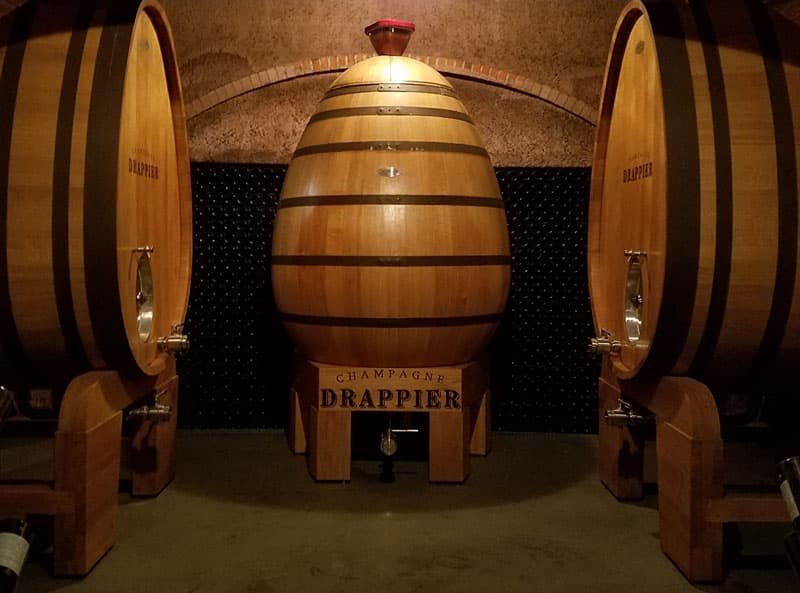
1. The ‘art’ in Ruinart

In 1895, Maison Ruinart’s long-standing relationship with the arts made headlines. André Ruinart commissioned famous Czech artist Alphonse Mucha to create one of France's first advertising posters.
Since then, the Champagne house has sought out eclectic artists to create dedicated works of art. One of the most famous examples is "Bouquet de Champagne Dom Ruinart," made from Murano glass by Dutch artist Maarten Baas. Their current website features frescos by Ugo Gattoni.
2. A floating office

During World War I, Maison Ruinart’s buildings were destroyed by fighting on the outskirts of Reims. To keep the business going, André Ruinart decided to move his office underground, into the Crayères.
When the Crayères flooded, he improvised again, running the business from an office on a raft.
3. Emptied cellars
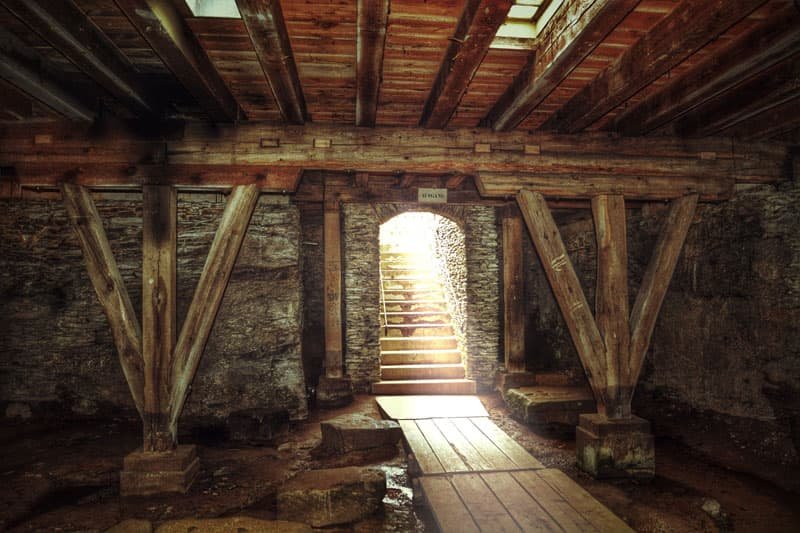
During World War II, the Germans found their way into the Crayères and emptied the cellars of precious Ruinart Champagne bottles. That’s why Maison Ruinart no longer has any bottles that predate 1945!
4. Champagne Ruinart doesn’t fly!

Maison Ruinart has a delivery policy that excludes air transport - from the supply of raw materials to commercial delivery. 85% of the Champagne is delivered by sea, and 15% by land.
In France, 28% of transport is conducted with electric or natural gas vehicles. This is part of Ruinart’s commitment to sustainability.
Read more: Curious about the calories in red wine? Discover more in this comprehensive guide.
The Ruinart Cuvées
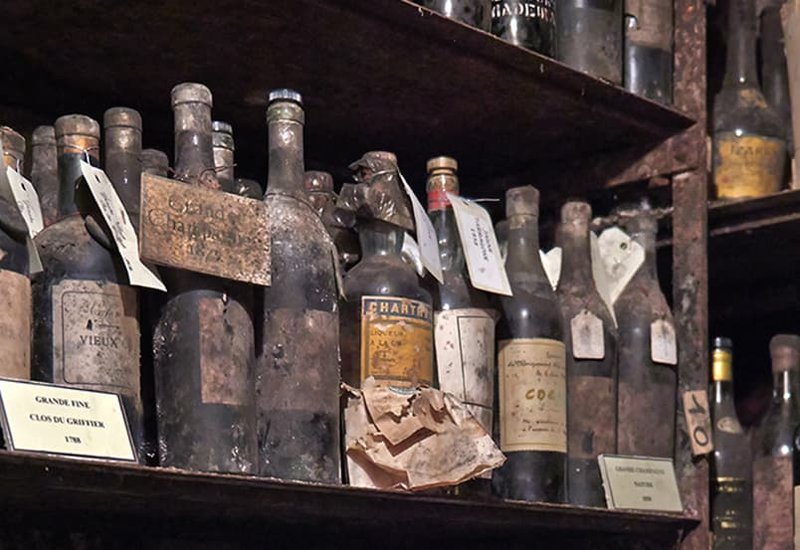
Ruinart wines come in vintage and non-vintage cuvées, and all of them are brut. Ruinart doesn't make sweet Champagne.
The grapes for the Ruinart cuvees are sourced from different vineyards, but the high percentage of Chardonnay undoubtedly drives their elegance.
1. Vintage Prestige Cuvées

The vintage cuvées are Dom Ruinart Blanc de Blancs, Dom Ruinart Rose, and R de Ruinart.
Let’s look at them in detail.
A. Dom Ruinart Blanc de Blancs
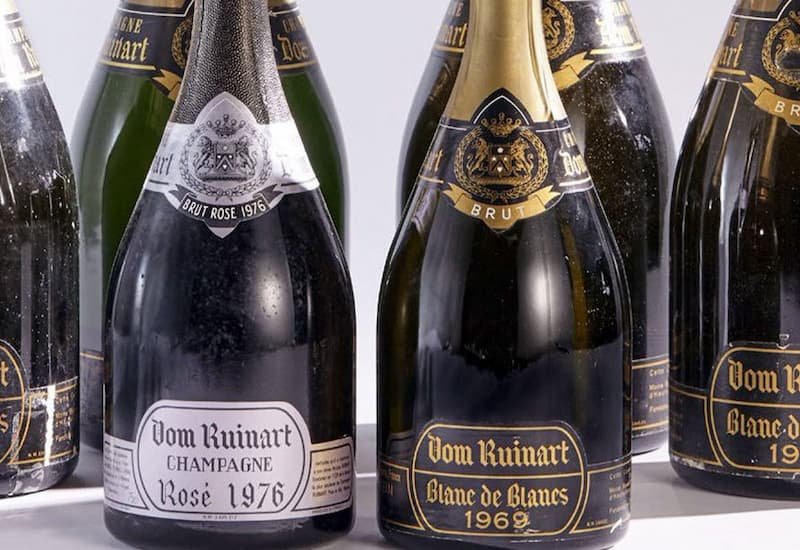
The Dom Ruinart prestige cuvée was created in honor of Dom Thierry in 1959. It’s 100% Chardonnay from Grand Cru vineyards in Côte des Blancs and the Montagne de Reims.
These bottles are aged an average of 10 years to increase aromatic complexity, producing a Champagne with delicate minerality.
Tasting notes often mention a fruity and floral aromatic palette, and their light character makes them a good aperitif.
Here’s a vintage classic to collect:
1976 Dom Ruinart Blanc de Blancs Brut Millesime, Champagne, France
The 1976 vintage flavors are marked by complex notes of dried fruit, linden, and hawthorn. This Blanc de Blancs is a perfectly balanced luxury cuvee with lots of fresh acidity and finesse. You can pair it with seafood, salads, and consomme.
Price of 1976 Dom Ruinart Blanc de Blancs Brut Millésimé: $730+
B. Dom Ruinart Rose
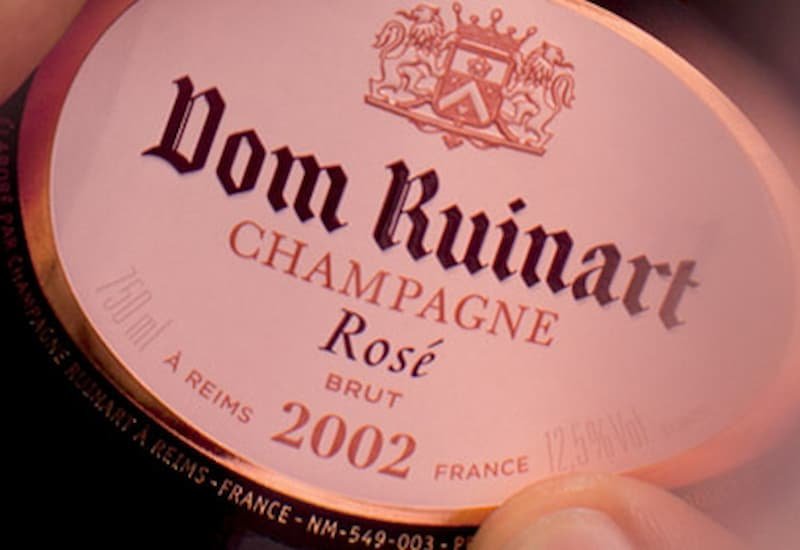
The Dom Ruinart Rosé was first released in 1962 (not to be confused with the non-vintage rosé). It resembles the Dom Ruinart Blanc de Blancs, but with added Pinot noir and is vinified as red wine. This rosé is typically composed of 80% Chardonnay and 20% Pinot Noir.
One of the best bottles to buy in 2024 is:
2002 Dom Ruinart Rose Millesime, Champagne, France
This 2002 vintage wine is wonderfully expressive with notes of red fruits and truffle. Toasty on the palate, it has an earthy structure and a thrust of fresh lemon curd acidity. Pair it with salmon tataki, marinated tuna, poultry, and veal.
Price of 2002 Dom Ruinart Rose Millesime: $300+
C. R de Ruinart
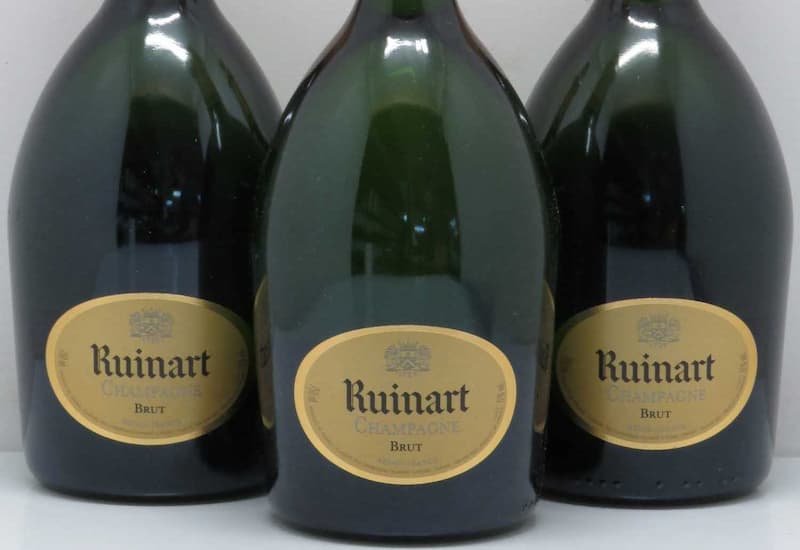
The R de Ruinart brut Champagne is a blend of Chardonnay, Pinot Noir, and Pinot Meunier from Ruinart’s Grand Cru and Premier Cru vineyards. The vintage blend is not declared every year.
A finely aged bottle to consider:
1947 Ruinart 'R de Ruinart' Brut Millesime, Champagne, France ($1,440+)
The 1947 is one the earliest vintages released after World War II and is a relatively rare find. It goes well with shellfish, crab, or lobster.
Price of 1947 Ruinart 'R de Ruinart' Brut Millesime: $1,440+
2. Non-Vintage Cuvees

The non-vintage cuvees are the Ruinart Blanc de Blancs, Ruinart Rosé, and R de Ruinart.
A. Ruinart Blanc de Blancs
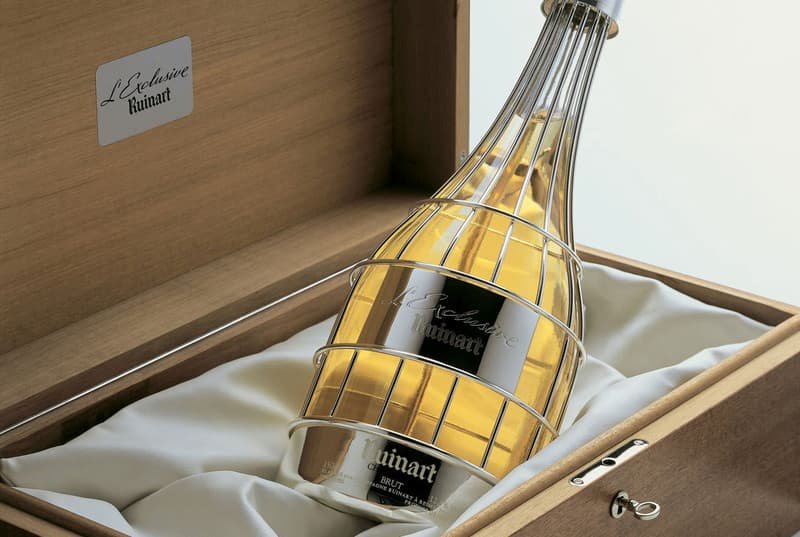
This non-vintage Blanc de Blancs Champagne is 100% Chardonnay from various years (20-25% of which are reserve wines from the previous two years.) Most of the fruit comes from the Premiers Crus of the Côte des Blancs and Montagne de Reims vineyards. These are supplemented by wines from Sézannais and the north of the Vesle valley.
Here’s an expressive Blanc de Blanc for your dinner table:
Ruinart L'Exclusive Blanc de Blancs Brut, Champagne, France
This Champagne displays an active effervescence and silky mousse. It offers an intense nose of fresh, ripe citrus fruits, white peach, and pineapple, supported by excellent freshness. Pair it with seafood and shellfish, sea bass or bream tartare.
Price of Ruinart L'Exclusive Blanc de Blancs Brut: $920+
B. Ruinart Rosé
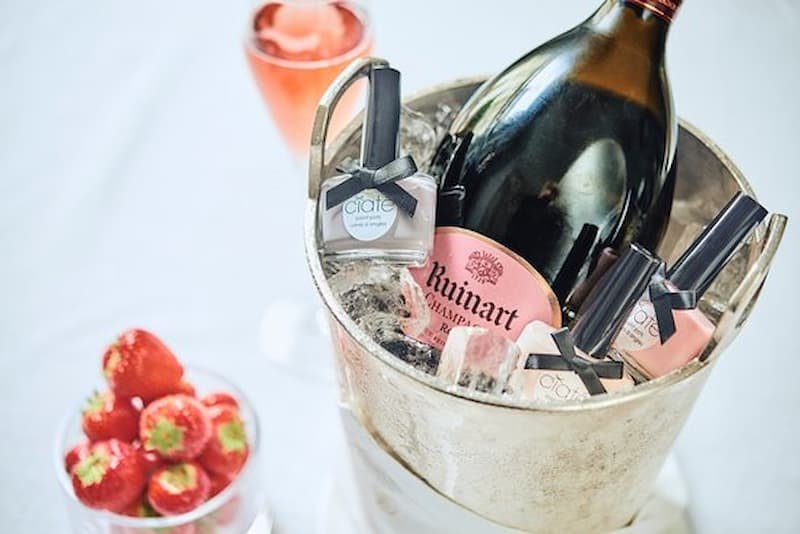
The Ruinart rosé is 45% Chardonnay from the Côte des Blancs and Montagne de Reims vineyards. The remaining 55% is Pinot Noir from the Montagne de Reims and the Vallée de la Marne vineyards. 18-19% of this is vinified into red wine, while 20-25% are reserve wines from the previous two years.
A classic rosé to savor:
Ruinart Brut Rose, Champagne, France
This classic rosé has a subtle and fresh nose with aromas of berries and stone fruits. The distinct, full palate features a touch of mint and pink grapefruit, balanced by a gentle effervescence in the mousse. It goes best with milk-fed lamb, veal fillet, or Italian prosciutto.
Price of Ruinart Brut Rose: $80+
C. R de Ruinart
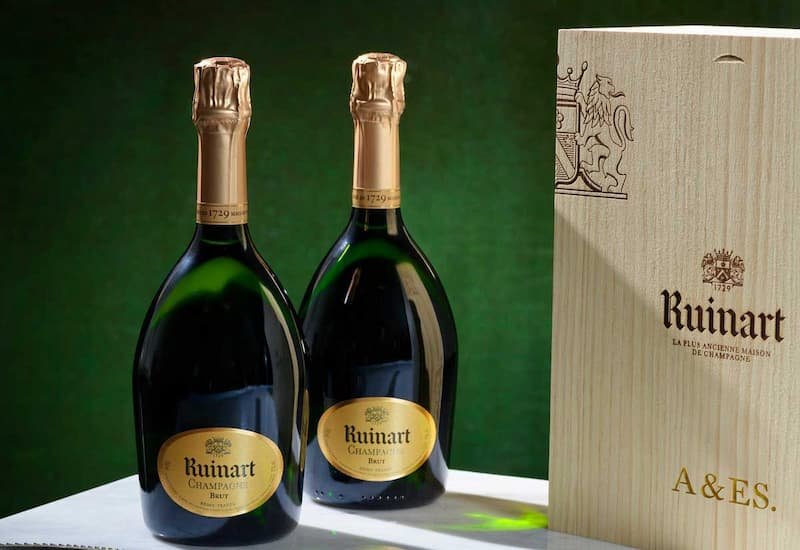
The R de Ruinart non-vintage blend comprises 40% Chardonnay, 49% Pinot Noir and 11% Pinot Meunier. 20-25% of these are wines reserved from the previous two years.
Don’t miss out on this Chardonnay blend:
Ruinart 'R de Ruinart' Brut, Champagne, France
This lovely blend is a balanced, rounded wine offering the scent of ripe fruit and nectarines. The long finish features the characteristic citrus freshness of Chardonnay. Serve it with poached oysters and seared scallops.
Price of Ruinart 'R de Ruinart' Brut: $60+
Now let’s see why Ruinart Champagne has always been a sought after wine for investment portfolios.
Investing in Ruinart Champagne
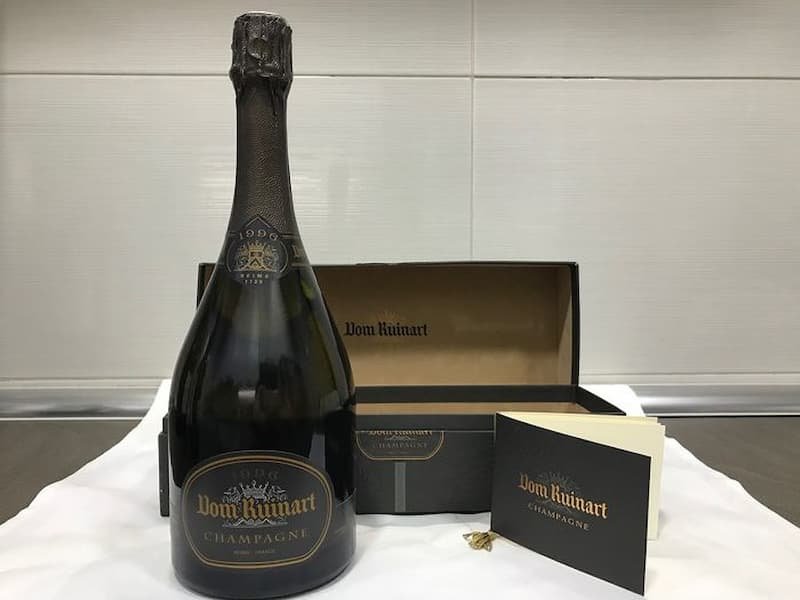
Top vintage Ruinart cuvées can age close to a decade after release, growing in value over the years. Its flagship Blanc de Blancs have continued to improve in taste and critics’ scores over the years.
The earlier vintages trade at huge premiums - so you should try to get hold of the younger, recently released bottles at attractive price points.
They also perform well at auctions. In 2017, six bottles of 1996 Dom Ruinart Blanc de Blancs were auctioned at Christie’s for $1,103.
Besides Ruinart, there are many other prestigious Champagnes you could invest in. It’s worth noting that according to the Liv-Ex annual report 2020, Champagnes had the biggest price increases during the year. It’s also predicted that Champagne prices will rise at a higher rate over the next decade due to rising production costs.
So, now is a good time to get hold of those prestigious bottles!
And, what’s the easiest way to invest in fine wine, including Champagne?
Look no further than Vinovest for all your wine-investment needs!
Buy Champagne Ruinart and Other Fine Wines through Vinovest
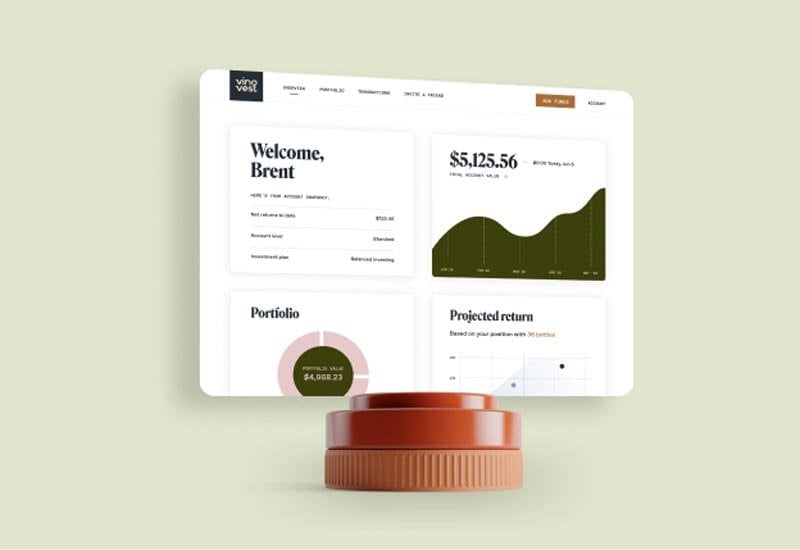
Vinovest is an AI-based wine investment platform that helps you buy, store, and sell Champagne Ruinart, Piper-Heidsieck, Screaming Eagle, and other prized wines from around the world.
How it works
Follow these four easy steps:
- Sign up
- Inform Vinovest of your risk appetite and investment preferences via a questionnaire.
- Add funds to your account.
- View your online wine portfolio.
Benefits
Here's why Vinovest is your go-to for buying fine wines:
1. Easy buying and selling at the best prices
Buy and sell wines across the globe, easily. Vinovest sources wines directly from wineries, wine merchants, and wine exchanges for the best below-retail prices.
2. Provenance and authenticity
Vinovest authenticates every wine bottle. Its provenance is checked before you buy. Be confident that your precious Eiswein, finely-aged Tempranillo, or any other bottle you buy is authentic.
3. Curated portfolio
Vinovest's professional team of Sommeliers and data scientists will curate your wine portfolio using proprietary financial models based on historical data.
4. Optimal and secure storage
Your wines are secured in bonded warehouses, under optimal conditions with 24/7 security. Power back-ups guarantee optimal climate control to cover emergencies.
5. Insurance
Vinovest's comprehensive insurance policy covers your wines, whether it's a limited edition Laurent-Perrier or a delicate Lambrusco di Sorbara.
6. Ownership
Every wine you buy through Vinovest is yours.
7. Easy delivery
Vinovest delivers your wines wherever you want — to your doorstep or your buyer if you’re going to sell them.
An Exquisite Ruinart for Your Collection
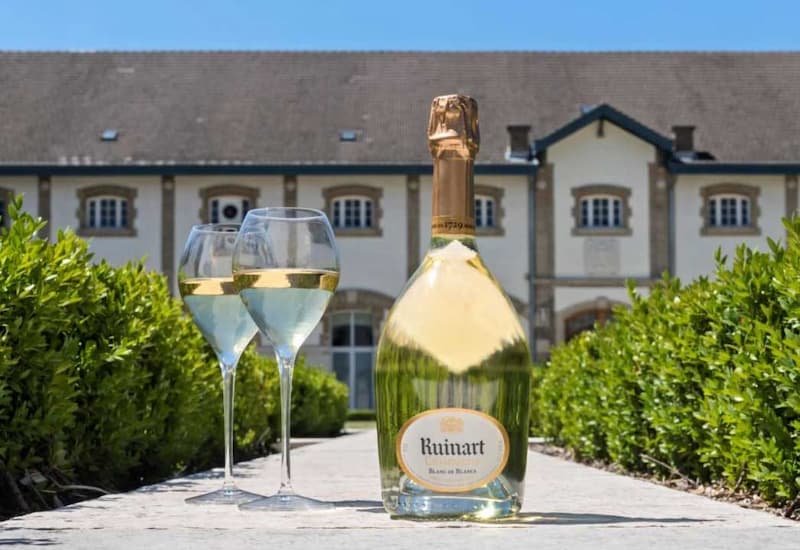
At Maison Ruinart, Chardonnay is king, and for good reason. Their select cuvées, with their distinct Ruinart style, are a cut above the usual sparkling wine you’ll find in your shopping cart.
Low production and exceptional quality winemaking make a Champagne that’s inimitable, hard to find, but definitely worthy of your collection.
Let Vinovest help you buy that Ruinart prestige cuvée from the comfort of your home. Sign up with Vinovest today, realize your wish list and build a fantastic wine portfolio!
